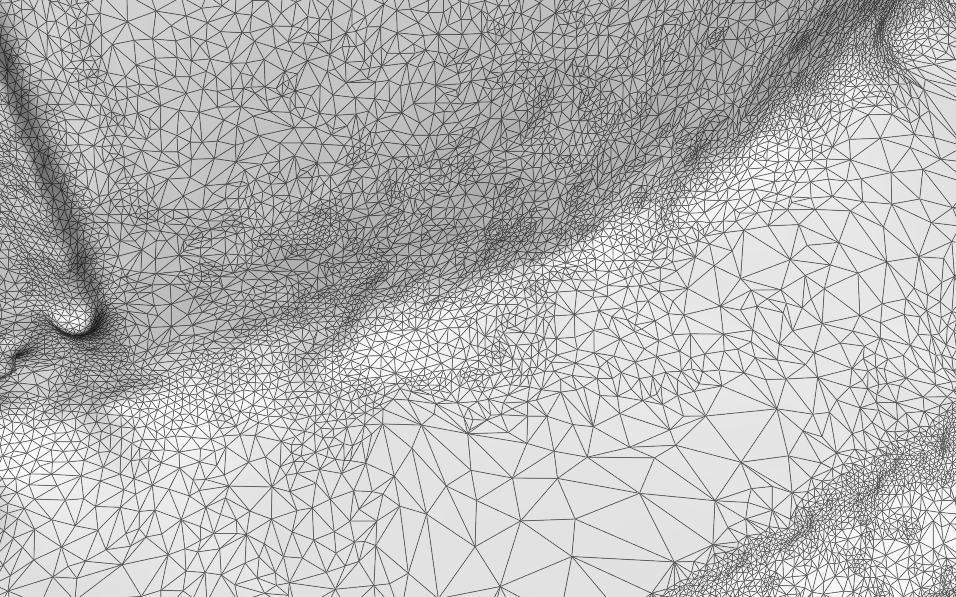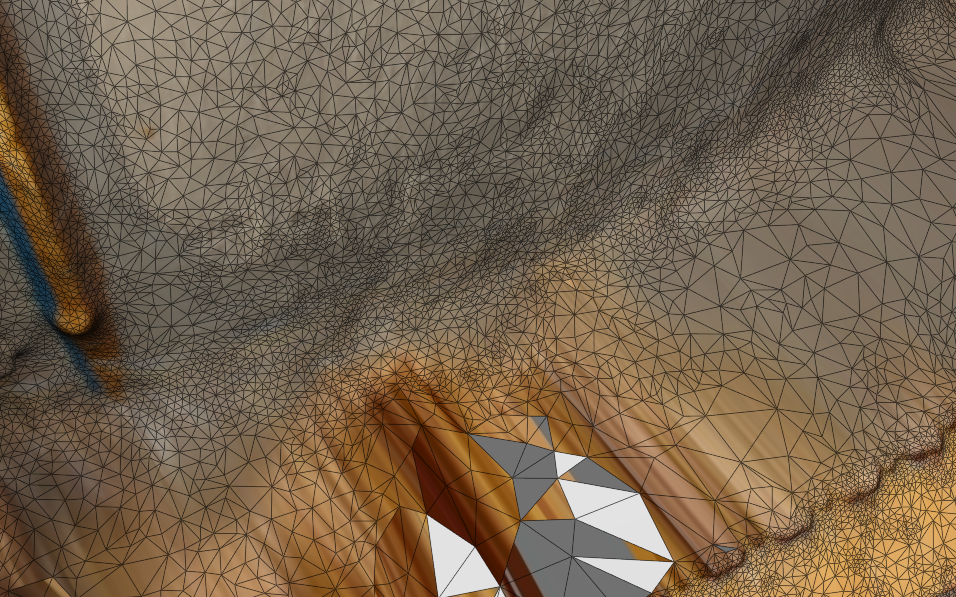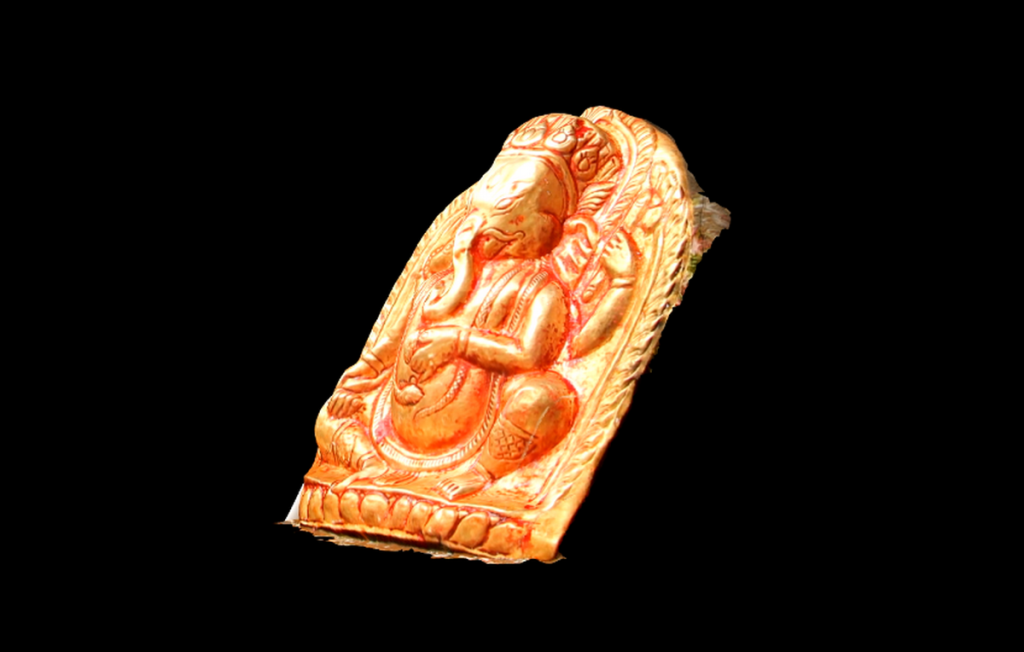Reconstructing History
Once we have collected the imagery and data we need it’s time to reconstruct the building or artifact digitally. Technically this can take a lot of computational processing power. Most of which is not feasible in Nepal.
We work with our global partners spanning the USA to Europe ensuring we can maximize complete reconstruction.
The above images show part of the reconstruction process. Image 1. shows a mesh which sculpts the connected images to closely replicate the physical object. During this stage any defects found can be corrected. Image 2. shows this same mesh once complete and with texture added. This is the stage when the object takes on its most recognizable form.
Fully reconstructed 3D model
This Ganesha shrine is one of the oldest in Nepal. It is one of three objects located in the same temple and the last that was not stolen. With our 3D replication we have now preserved this artifact so that it can be 3D printed or remolded at a later stage should it ever be stolen.
[iframe src=”https://p3d.in/e/krOHs+bg-000″ allowfullscreen=”true” webkitallowfullscreen=”true” width=”640″ height=”480″]
The 3D image make take a while to load.
With full texture enabled we can even show the exact metallic coloring of the original thereby enabling a complete and exact duplicate to be made.



